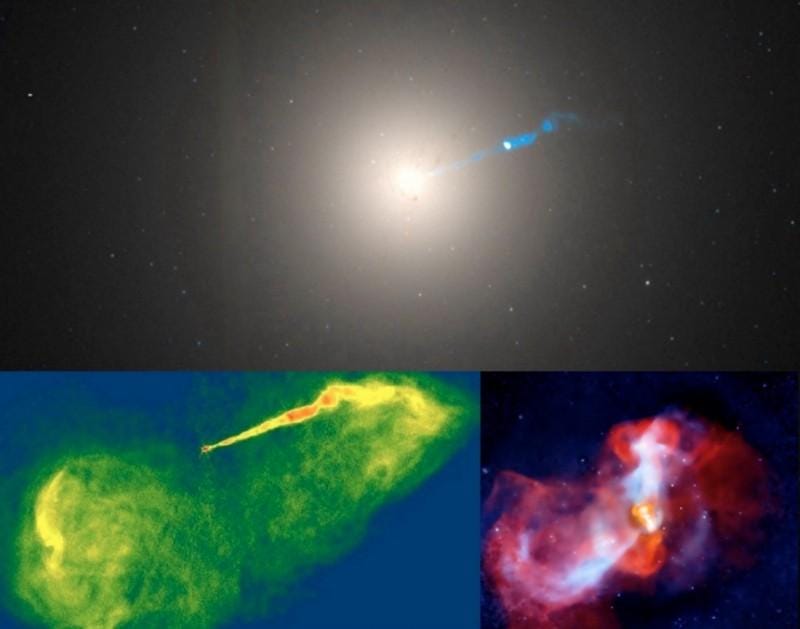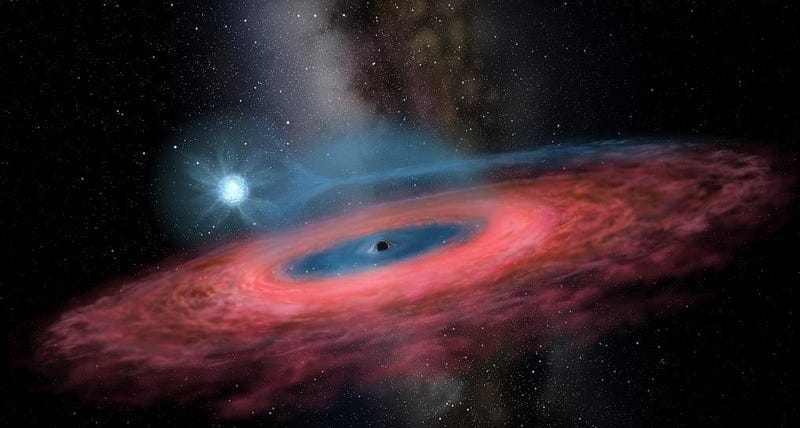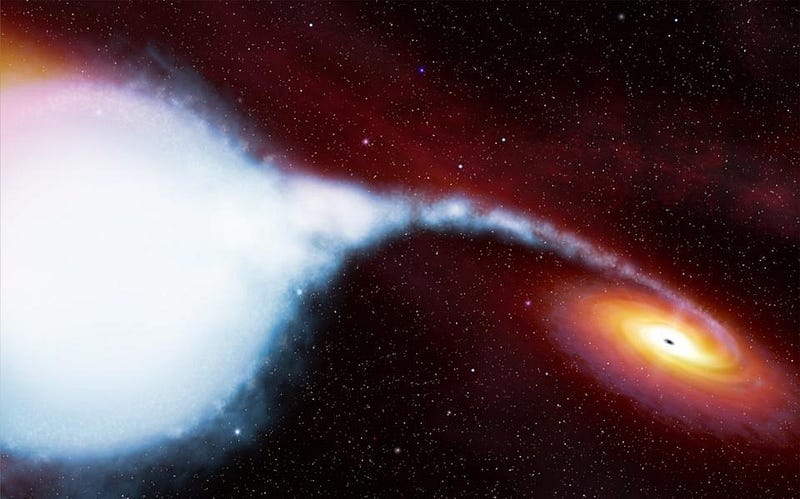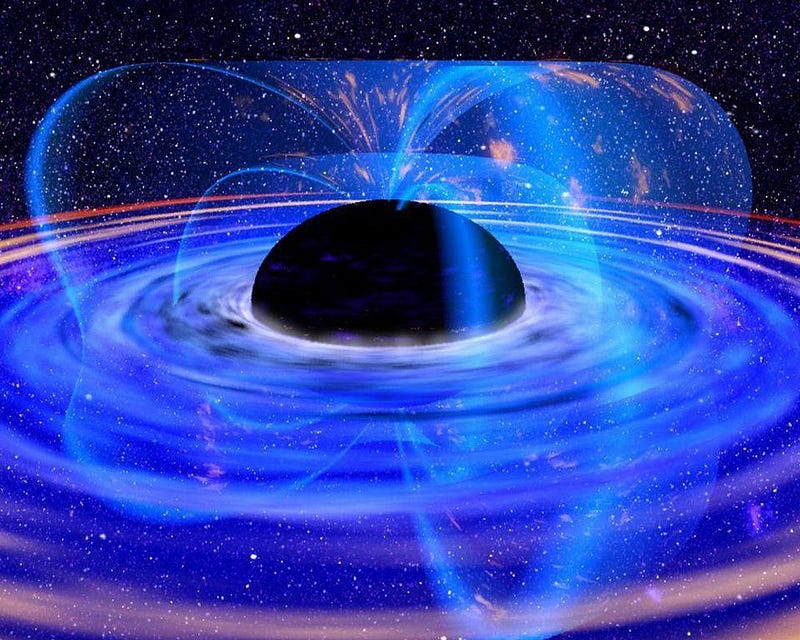The Mysterious Nature of Black Holes and Their Emissions
Written on
Chapter 1: Understanding Black Holes
Black holes are among the most enigmatic entities in the cosmos. This artwork depicts J043947.08+163415.7, an extremely distant quasar powered by a supermassive black hole. While it holds the title of the brightest quasar observed from the early universe, this brightness is only apparent rather than intrinsic. (ESA/HUBBLE, NASA, M. KORNMESSER)
A common misconception is that black holes are points of complete darkness. In reality, they may have mechanisms to emit radiation, leading to the intriguing question: can black holes ever eject matter, including light? The answer appears to be affirmative. Indeed, the most astonishing aspect of black holes—both predicted and directly observed—is that they are not entirely devoid of light.

The black hole at the center of the M87 galaxy, the second-largest black hole visible from Earth, is illustrated through various observational methods: optical from Hubble, radio from NRAO, and X-ray from Chandra. Each method reveals distinct details based on wavelength and observational techniques, showcasing that black holes are not truly "black." (HUBBLE SPACE TELESCOPE / NASA / WIKISKY; NRAO / VERY LARGE ARRAY; NASA / CHANDRA X-RAY TELESCOPE)
In a scenario where a black hole is paired with a star, the black hole's gravitational pull can be inferred by observing the star's orbital movement. If the star wobbles in its path, it indicates the presence of a black hole, enabling us to deduce its mass and other parameters.
Chapter 2: Detection Through Radiation
The first video titled "Black Holes Keep Burping Up Stars They Destroyed Years Earlier" discusses how black holes can influence surrounding stars and even eject remnants of their previous companions, challenging the idea of them as ultimate traps.
Black holes are not solitary; they exist within an environment rich in matter and energy. When they actively consume surrounding material, they can emit X-rays, which serve as a primary detection method for many non-supermassive black holes.

In systems where a black hole orbits a star, the gravitational effects are evident as the star's motion alters over time, allowing matter from the star to spiral into the black hole. This accretion process produces X-ray and radio emissions, enabling astronomers to detect these phenomena.
The second video titled "Black Holes Don't Exist!? - Ask a Spaceman!" dives into the philosophical implications of black holes, questioning their existence and our understanding of them.
Matter near a black hole behaves dynamically, colliding and heating up, leading to the creation of jets that are expelled in opposite directions. These jets emit significant light and radiation, showcasing the active processes occurring in the vicinity of a black hole.

Charged particles around a black hole accelerate and emit radiation due to electromagnetic forces, even as some of the matter inevitably falls into the black hole. This interplay creates a distinctive environment where the black hole can appear to emit radiation without directly releasing anything from its event horizon.
Chapter 3: The Nature of Hawking Radiation
In a striking revelation, physicist Stephen Hawking introduced the concept of Hawking radiation, suggesting that black holes can emit particles, in essence allowing energy to escape. This phenomenon occurs due to quantum fluctuations in the vacuum around the black hole, resulting in a gradual loss of mass over time.

The rate of this radiation is extraordinarily slow, particularly for larger black holes. For instance, a black hole the mass of our Sun would take an estimated 10^67 years to evaporate, while those in the center of the Milky Way may require 10^100 years. Despite this slow process, it demonstrates how black holes can interact with their surroundings and the universe at large.
In summary, while black holes are often deemed inescapable, they can still play a role in the cosmic ballet of matter and energy, continuously influencing their environment in profound ways.